Sterilization is a good alternative to preserve seasonal foods for the next season and enjoy them all year long!
Sterilization may seem complicated, but it's not! You may wonder how to do it, what equipment to have to start with. Then you may wonder how to do the sterilization, how to check if it went well and then where to store the jars ?
We will answer to all these questions and many more in this article!
CONTENTS :
- Questions you may have -
Which jars should I use to preserve my food? Which capacity to choose?
What equipment do I need to sterilize?
What foods can be preserved by sterilization?
How to fill the jars properly?
How long does it take to sterilize jars?
Is it problematic if I exceed the sterilization time?
How to sterilize a jar ?
How to keep a stable temperature during sterilization?
Once sterilization is over, should the jars be removed immediately?
How do I know if the jars are sterilized?
Where to store my glass jars?
How long can I keep my jars?
1. Which jars should I use to preserve my food? Which capacity to choose?
The choice of jars depends on what you want to do with them and is based on a series of criteria:
The size / capacity of your glass jars
The number of glass jars you need
The opening mechanism of your glass jars
The shape of your glass jars
If you want to know more, don't hesitate to read our blog dedicated to this subject: which jars to choose to preserve food?
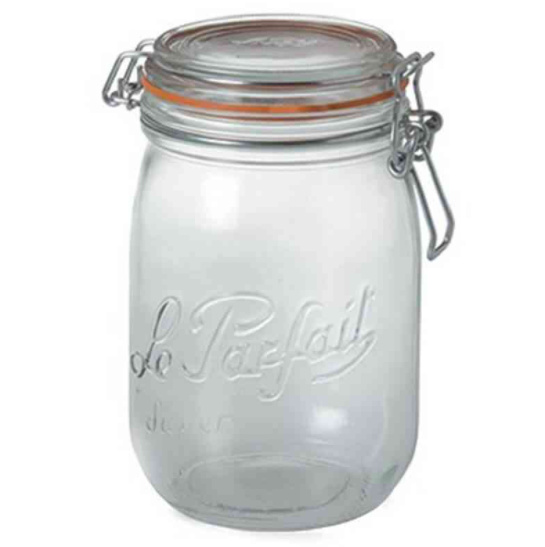
The jars cost between 3 and 8 euros. If you plan to do a lot of canning, it may be expensive at the time but you will save money in the long term because you can keep these jars for a lifetime!
Don't hesitate to look at second hand or to ask you family to pick some up. You will just have to change the rubber for sterilization but it is worth it!
You can also collect glass bottles to store juices, soups and anything else that is liquid.
2. What equipment do I need to sterilize ?
To preserve your food you will need glass jars of course!
You will need something to sterilise your glass jars. There are several alternatives:
A sterilizer: the advantage is that the sterilizer has a column to arrange your jars so they don't clash. They are quite expensive to buy (between 50 and 150 euros) but you can always find one second hand or borrow it or use other alternatives.
An oven: all you have to do is heat up the oven gradually, see the steps in our article on this subject.
A pressure cooker or a large pot: you can also sterilize in these two containers as long as you put a cloth between the jars to prevent the jars from colliding and breaking.
3. What foods can be preserved by sterilization?
You can store almost any fresh food you want: vegetables (carrots, cabbage, tomatoes, ...), meat, fruit (apples, plums, pears, ...), etc. WHAT YOU CAN'T DO is to store food that has already been frozen or is not fresh.
GIVE PREFERENCE TO FRESH AND SEASONAL PRODUCTS!
You can also make jams, ratatouille, tomato parcels, sauces, preserved fruits, etc. and store your food in this form.
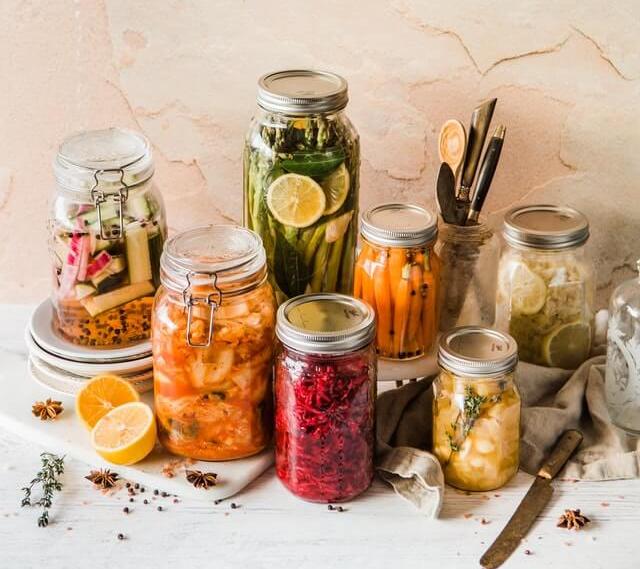
4. How to fill the jars properly?
In order not to miss your sterilisation, you must be careful not to overfill or underfill.
Fill the glass jar to 2 cm below the rim. Some glass jars have a scale for the fill limit, use this if you have one!
Before closing the glass jar, wipe the edges well. Then put your rubber on and let it cool.
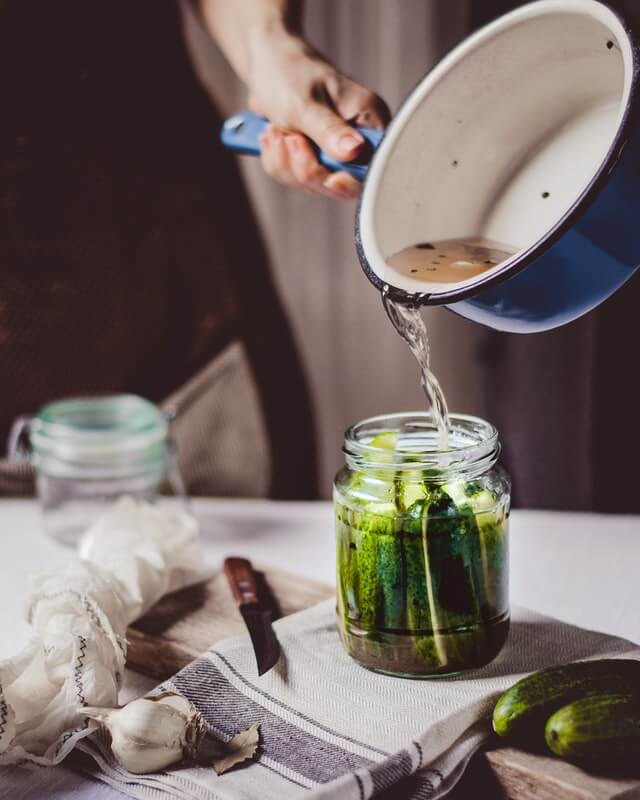
5. How long does it take to sterilize jars?
Sterilisation really doesn't take very long! Count 30 minutes: 10-15 minutes to sterilise your empty jars and 15-20 minutes for filled glass jars (depending on their capacity). You also have to count the preparation time of what you want to preserve, which is quite variable.
6. Is it problematic if I exceed the sterilization time?
As the saying goes, " better too much than too little" and this is totally applicable in the case of sterilization!
If you exceed the sterilization time for empty glass jars, no problem.
If you exceed the sterilization time for filled glass jars, no worries either, but you may lose a little colour or taste quality, but only slightly (unless you sterilize for 2 hours instead of 15 minutes).
7. How to sterilize a jar ?
We have done an article just on this subject so feel free to read it in our blog.
A little advice, sterilization is like everything else in cooking, you have to go step by step to progress. So don't hesitate, at the beginning, to start with something really simple like tomato coulis in the summer or applesauce in October. This will allow you to practice before keeping things more elaborate.
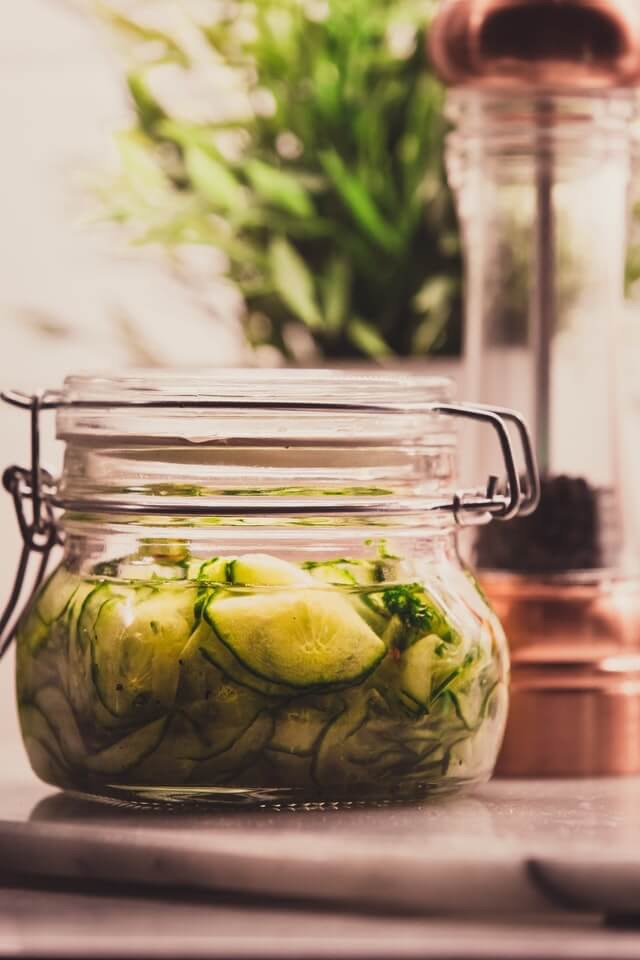
8. How to keep a stable temperature during sterilization?
You can either use a thermometer or use your observation skills and knowledge of basic chemistry: water boils at 100°C so keep the water boiling to ensure correct sterilisation throughout the process.
9. Once sterilization is over, should the jars be removed immediately?
Yes, it is advisable to take the jars out directly to avoid contamination after sterilization. Indeed, if you leave the glass jars in water, there is a risk of contamination through the seal which is not hermetic.
You can take the glass jars out with tongs to avoid burning yourself. Once taken out, let them cool down before storing them.
This will also allow you to chain sterilizations instead of waiting for the glass jars to cool down, to limit water and electricity consumption and, above all, to perform several sterilizations in one day/afternoon.
10. How do I know if the jars are sterilized?
It's easy to see if your sterilisation has worked! Once your cans have cooled down, remove the side closure and test whether the lid "sticks" to the glass jar. If it does, you have successfully sterilised! The vacuum has been created on the inside and you can store your glass jar for several months.
If your glass jar lid does not stick, there is a problem. But don't worry, you can remedy this by repeating the heat treatment. As a first step, try to identify the cause of the problem, which may be due to :
Sterilization that has not been carried out correctly: too short a time or too low a temperature.
Poor filling: too little or too much
A sealing problem: broken or chipped pot, broken or chipped lid or use of an unsuitable rubber washer (too old, worn or not adapted to the format)
Once you have identified the problem, you can simply remedy it and start your sterilisation again! Then store your preserves in a cool, dark place and enjoy them in a few months.
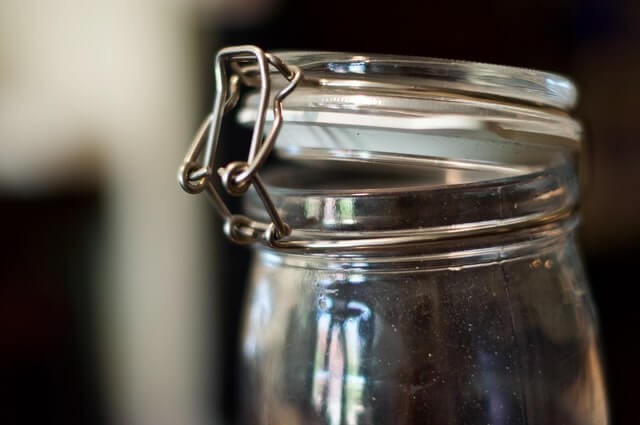
11. Where to store my glass jars?
Once your glass jars have been sterilised, you need to find a place to store them. It is best to store them in a cool, dry place away from the sun. The temperature should be below 23°C and not vary too much. A cellar or basement, for example, is usually a good place to store your jars.
Don't forget to put labels or notes on your jars before storing them to record the date and contents. Here is an example you can make yourself, otherwise you can find many models on the Internet.
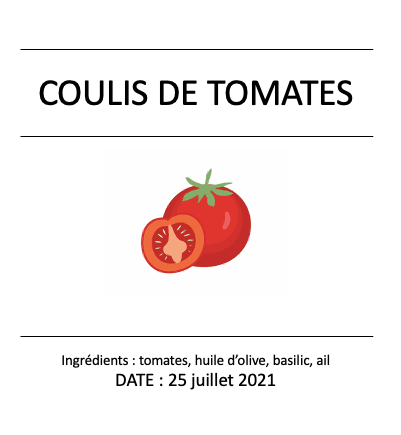
12. How long can I keep my jars?
In general, it depends on the preparation but glass jars are said to keep food for about 12 months.
To conclude...
So... are you going into sterilization?
Sterilization is a good alternative to preserve seasonal food for the next season. It also avoids waste and eliminates the need for industrial preserves. So don't hesitate to start!
See you soon!

